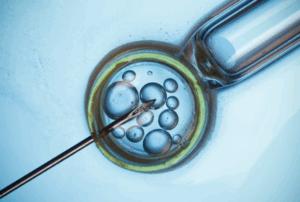Despite so many being affected by fibroids, there is little known about how they are caused. This is just one of the many aspects of women’s health that requires more research, funding, support and awareness. The link between fibroids and the vaginal microbiome is an emerging area of research, as the understanding of how the microbiome influences various aspects of gynaecological health continues to expand. With July being Fibroids Awareness Month, we thought it more important than ever to delve in to the link between the two.
What are fibroids?
Fibroids are non-cancerous growths that develop in the female genital tract, most commonly the uterus. They are composed of smooth muscle cells and fibrous connective tissue.
Symptoms can include: heavy menstrual bleeding, pelvic pain, frequent urination, and complications with fertility and pregnancy. Fibroids and their associated symptoms can therefore significantly impact the health, wellbeing, and quality of life of those affected.
Who does this impact?
Fibroids can impact up to 80% of women during their lifetime[1]. However, they are most common in women of reproductive age, with higher prevalence in African-American women and those with a family history of fibroids.
Potential Links Between Fibroids and the Vaginal Microbiome
- Microbiome Composition:
- Studies have shown that women with fibroids may have different compositions of vaginal microbiota compared to those without fibroids. For example, a decrease in Lactobacillus species and an increase in other anaerobic bacteria such as Gardnerella, Prevotella and Streptococcus species, may increase the risk of fibroid development[2].
- Inflammation:
- Chronic inflammation is known to be associated with fibroid development. An imbalanced vaginal microbiome can lead to increased inflammation, potentially creating an environment conducive to fibroid growth[3].
- Immune System Modulation:
- The vaginal microbiome can influence the local immune response. Dysbiosis (imbalance in the microbiome) may lead to altered immune responses that could contribute to the development or growth of fibroids.
Why could this be important?
- Diagnostics and Treatment: Understanding the link between the vaginal microbiome and fibroids could lead to new diagnostic markers or therapeutic targets. Modulating the microbiome through probiotics, prebiotics, or antibiotics might become a strategy for managing fibroids.
- Preventive Measures: Maintaining a healthy vaginal microbiome through lifestyle factors, such as diet, sexual health practices, and hygiene, could potentially reduce the risk of fibroid development.
Conclusion
The relationship between fibroids and the vaginal microbiome is complex and not yet fully understood. Current research suggests that dysbiosis of the vaginal microbiome may contribute to fibroid development through mechanisms involving immune modulation, inflammation, and microbiome composition. Ongoing studies are needed to further elucidate this connection and explore potential therapeutic implications.
[1] https://www.bartshealth.nhs.uk/news-from-wxh/fibroid-awareness-month-2023-15511/
[2]https://www.ncbi.nlm.nih.gov/pmc/articles/PMC10843103/#:~:text=It%20is%20plausible%20that%20bacterial,inflammation%20in%20the%20reproductive%20tract.
[3]https://www.ncbi.nlm.nih.gov/pmc/articles/PMC10843103/#:~:text=It%20is%20plausible%20that%20bacterial,inflammation%20in%20the%20reproductive%20tract.







